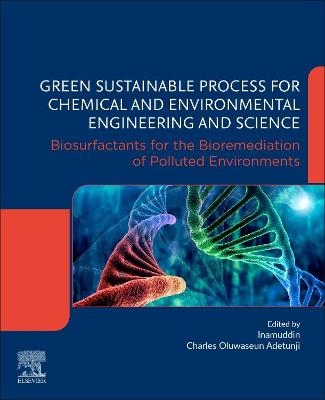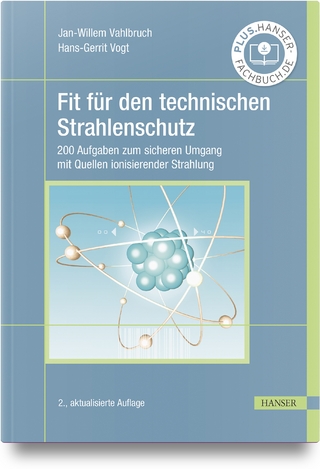
Green Sustainable Process for Chemical and Environmental Engineering and Science
Elsevier Science Publishing Co Inc (Verlag)
978-0-12-822696-4 (ISBN)
Drawing on the knowledge of its expert team of global contributors, this book provides useful insights for all those currently or potentially interested in developing or applying biosurfactants in their own work.
Dr. Inamuddin is an Assistant Professor at the Department of Applied Chemistry at the Zakir Husain College of Engineering and Technology, Aligarh Muslim University, Aligarh, India. He has extensive research experience in multidisciplinary fields of analytical chemistry, materials chemistry, electrochemistry, renewable energy, and environmental science. He has worked on different research projects funded by various government agencies and universities and is the recipient of several awards, including the Fast Track Young Scientist Award and the Young Researcher of the Year Award 2020, Aligarh Muslim University, India. He has published nearly 200 research articles in various international scientific journals, 18 book chapters, and numerous edited books with well-known publishers. Prof. Charles Oluwaseun Adetunji is a full Professor at the Department of Microbiology, Faculty of Sciences and the Director of Research and Innovation, Edo State University Uzairue (EDSU), Edo State, Nigeria. He formerly served as the Acting Director of Intellectual Property and Technology Transfer, Head of the Department of Microbiology, and Sub Dean of the Faculty of Science. Currently, he holds the positions of Chairman of the Grant Committee and Dean of the Faculty of Science at EDSU. Prof. Adetunji is a Fellow of the Royal Society of Biology in the UK. Additionally, he serves as a Visiting Professor and the Executive Director of the Center for Biotechnology at Precious Cornerstone University, Nigeria. His research centers on applying biological techniques and microbial bioprocesses to achieve Sustainable Development Goals (SDGs) and contribute to advancements in agriculture.
Part 1: Production, Assessment and Optimization of Biosurfactants for Bioremediation 1. Isolation, screening, and characterization of biosurfactant-producing microorganism that can biodegrade heavily polluted soil 2. Mass production of active metabolites/biosurfactants from microorganisms isolated from polluted, agricultural, or uncultured soil, and their utilization for eco-restoration of polluted soil 3. Assessing the presence of hydrocarbon-biodegrading bacteria using multiplex primers/Geochip 4. Optimization, modelling, prediction, and kinetics of key factors supporting the biodegradation process after treatment with biosurfactants 5. Environmental impact assessment of polluted soil using biosurfactants 6. Validation of eco-restored soil after treatment with biosurfactants
Part 2: Remediation and Degradation Applications 7. Bioremediation of Polythenes and Plastics using biosurfactants 8. Application of biosurfactants for treatment of effluent waste, polluted water, wastewater and sewage sludge 9. Application of biosurfactants and their combination with nanomaterials in the purification of polluted and contaminated water 10. Application of biosurfactants for biosorption in heavily contaminated soil and water 11. Eco-restoration and Nanobioremediation of polluted soil using nanomaterials synthesized from biosurfactant 12. Relevance of CRISPR Genetic Engineering for the enhancement of Xenobiotic Degradation and ecorestoration potential of heavily polluted soil 13. Application of biosurfactants as a non-invasive stimulant to enhance the degradation activities of the indigenous hydrocarbon degraders in soil 14. Biotransformation of polluted soil when treated with biosurfactants: petroleum hydrocarbons, polycyclic aromatic hydrocarbons, and pesticides 15. Application of biosurfactants in the extraction of bitumen from tar sands
| Erscheinungsdatum | 18.06.2021 |
|---|---|
| Sprache | englisch |
| Maße | 191 x 235 mm |
| Gewicht | 450 g |
| Themenwelt | Naturwissenschaften ► Chemie ► Physikalische Chemie |
| Naturwissenschaften ► Chemie ► Technische Chemie | |
| Technik ► Umwelttechnik / Biotechnologie | |
| ISBN-10 | 0-12-822696-X / 012822696X |
| ISBN-13 | 978-0-12-822696-4 / 9780128226964 |
| Zustand | Neuware |
| Informationen gemäß Produktsicherheitsverordnung (GPSR) | |
| Haben Sie eine Frage zum Produkt? |
aus dem Bereich


